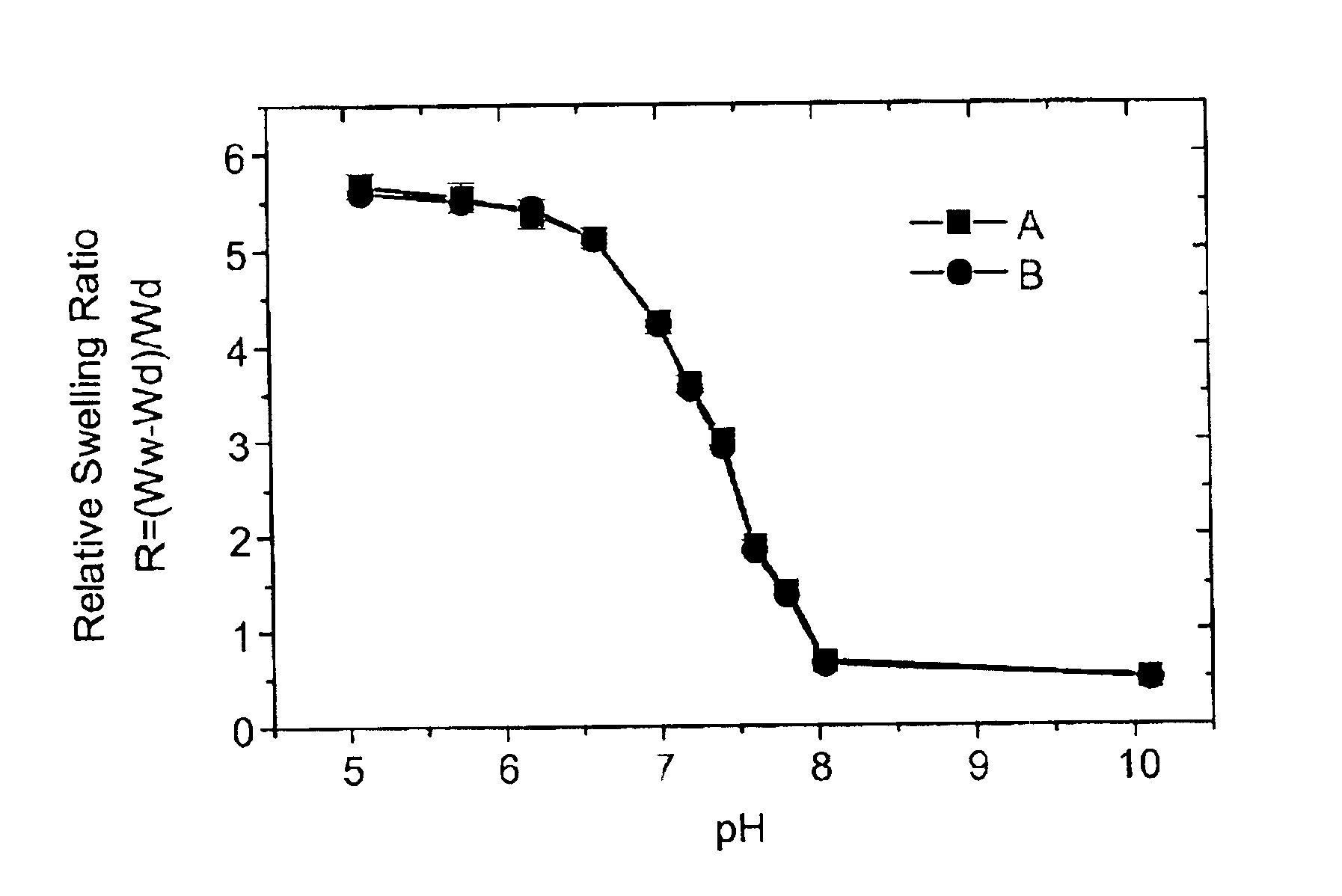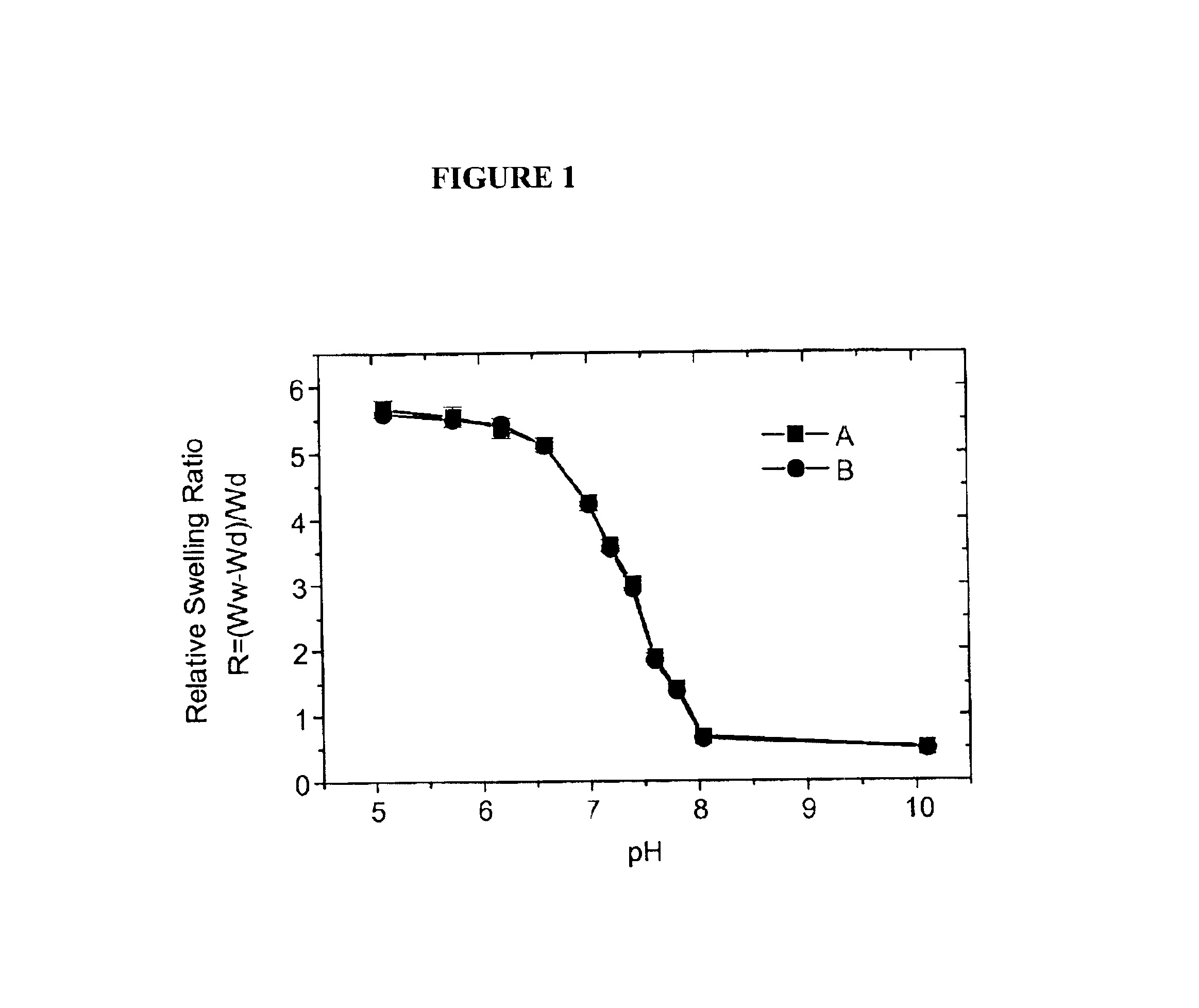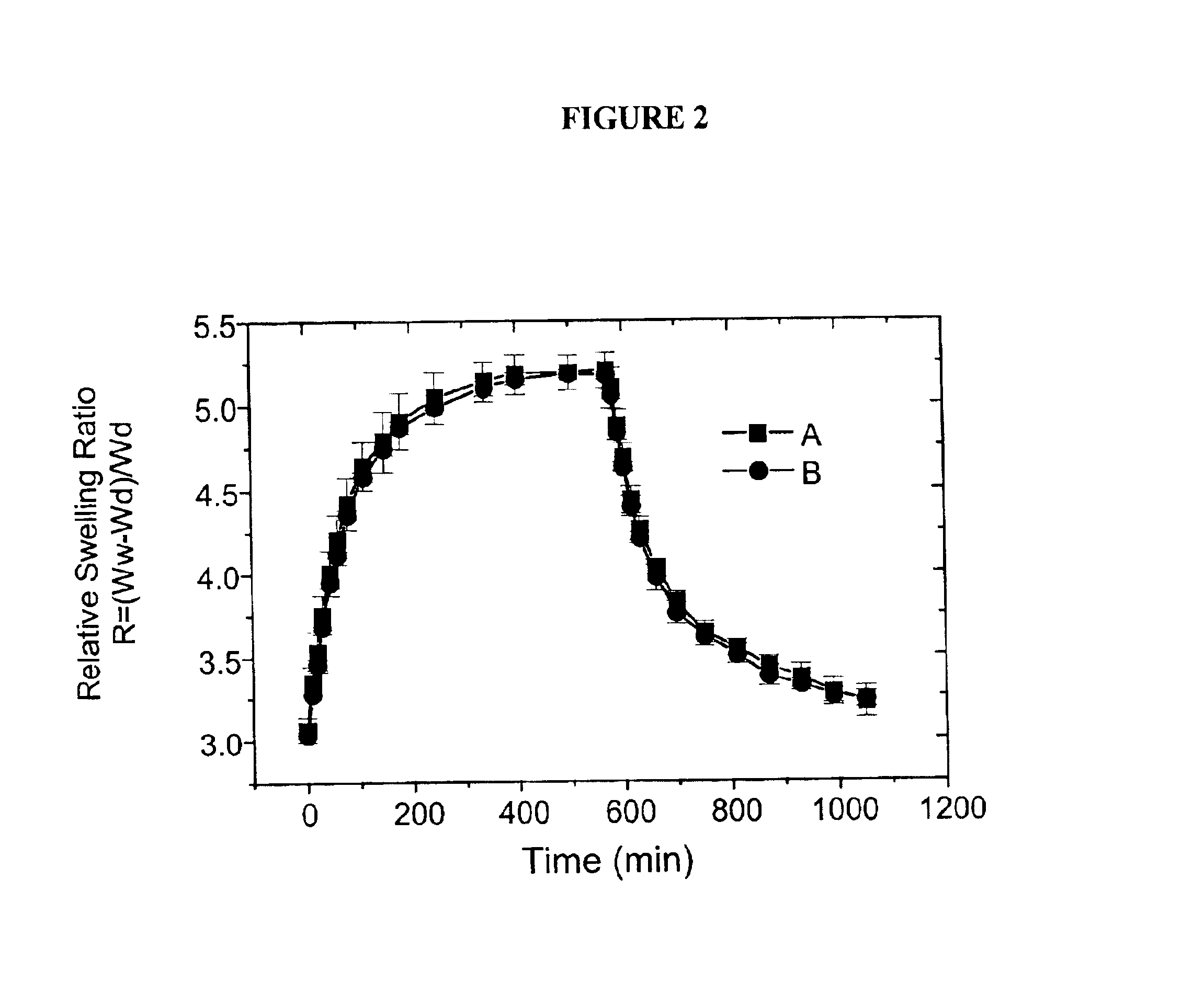Polymer matrix containing catalase co-immobilized with analytic enzyme that generates hydrogen peroxide
a technology of catalase and analyzed enzyme, which is applied in the field of catalase, can solve the problems of cumbersome oxygen supply system, insufficient oxygen supply for the reaction, and decay of gox activity with time, and achieves the effects of improving swelling kinetics, enhancing hydrogel swelling, and prolonging useful li
- Summary
- Abstract
- Description
- Claims
- Application Information
AI Technical Summary
Benefits of technology
Problems solved by technology
Method used
Image
Examples
Embodiment Construction
In one embodiment, glucose is the analyte and glucose oxidase is the analyte-sensitive enzyme. Preferably, the hydrogel for this application is relatively thin, between about 0.1 mm and 0.4 mm, and lightly crosslinked. In this embodiment, glucose oxidase (GOx) will generally be used at a concentration ranging from about 500 units / ml to 1500 units / ml, as this concentration range is suitable for measuring blood glucose levels in human beings. For GOx at these levels, the useful range of catalase concentration is from about 100 units / ml to about 1000 units / ml. The best results were achieved by about 600 units / ml; 900 units / mi did not produce improvement in swelling kinetics and in fact appeared to produce less of an improvement than 600 units / ml. It is thought that at 900 units / ml, the amount of catalase is high enough to possibly cause protein aggregation which denatures the enzyme, or by limiting substrate diffusion.
In a highly preferred embodiment, the hydrogel is selected to have p...
PUM
| Property | Measurement | Unit |
|---|---|---|
| Thickness | aaaaa | aaaaa |
| Thickness | aaaaa | aaaaa |
| Concentration | aaaaa | aaaaa |
Abstract
Description
Claims
Application Information
 Login to View More
Login to View More - R&D
- Intellectual Property
- Life Sciences
- Materials
- Tech Scout
- Unparalleled Data Quality
- Higher Quality Content
- 60% Fewer Hallucinations
Browse by: Latest US Patents, China's latest patents, Technical Efficacy Thesaurus, Application Domain, Technology Topic, Popular Technical Reports.
© 2025 PatSnap. All rights reserved.Legal|Privacy policy|Modern Slavery Act Transparency Statement|Sitemap|About US| Contact US: help@patsnap.com



